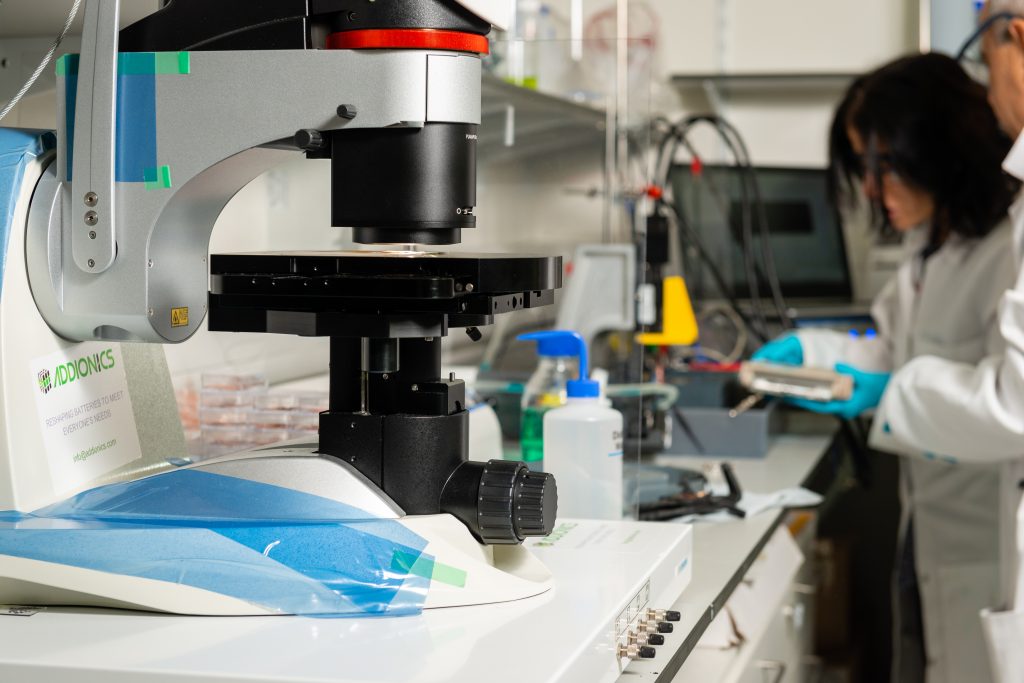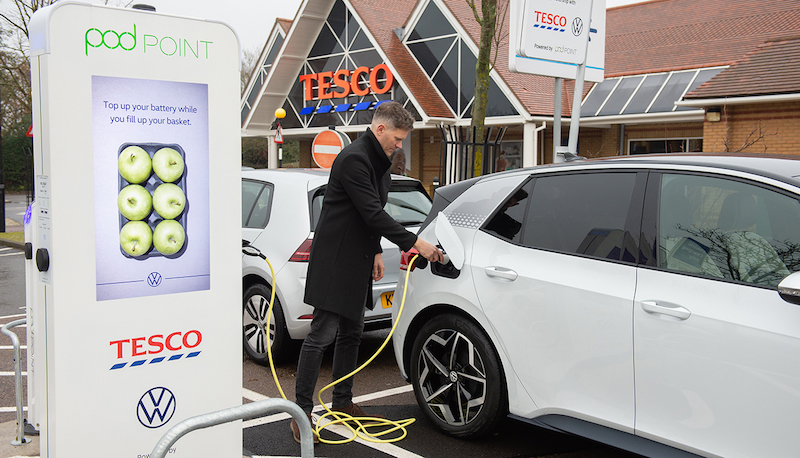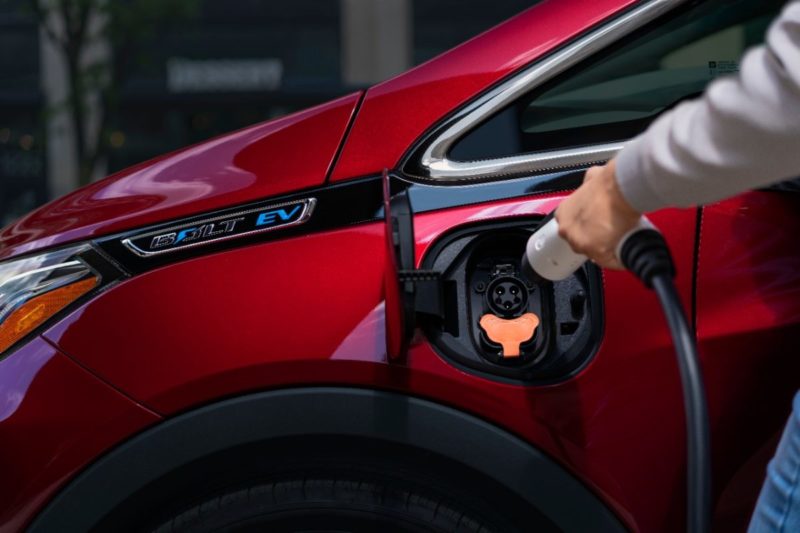Only 4% of new vehicles sold in the US in June 2021 were electric. With pledges of support from leading automakers including General Motors and Ford, President Biden aims to change this with a recent executive order that calls for half of all new vehicles to be battery-powered by 2030 along with tightening fuel economy standards
Electrification is inevitable, but we’re going to need better batteries and much more of them – fast. In fact, electric vehicles (EVs) are projected to make up 90% of battery demand over the next two decades. While there are many other hurdles to overcome such as building charging infrastructure and securing supply chains, automakers are under increasing pressure to solve the cost, performance and manufacturing challenges associated with EVs. Reaching a limit with chemistry-based solutions, automakers are now eyeing battery physics and architecture as the next big battery breakthrough.

Making EVs affordable
A study led by Castrol in 2020 found that 63% of consumers think EVs are currently beyond their budget. With battery packs accounting for nearly 30% of the total cost of the EV, reducing battery costs is a key priority for automakers. The good news is costs have been falling, and once battery packs reach the projected US$100/kWh in 2023, EVs may finally become cost-competitive with internal combustion engine vehicles. However, battery technology needs to improve if EVs are to fully replace ICE vehicles, and these improvements come at a cost. For example, solid-state batteries will extend drive range and speed up charge time compared to today’s lithium-ion batteries, but they could still cost anywhere between ~US$800/kWh and ~US$400/kWh five years from now.
Reaching a limit with chemistry-based solutions, automakers are now eyeing battery physics and architecture as the next big battery breakthrough
To address this Catch-22, the auto industry has been actively exploring new approaches to battery physics as opposed to chemistry, which has only resulted in incremental improvements over the last few decades. Most design-based solutions are chemistry-agnostic so automakers don’t have to risk betting on new battery chemistries.
Take Tesla’s ‘biscuit tin’ battery cell for example, a key advancement unveiled at its 2020 Battery Day. Still using lithium-ion chemistry, Tesla removed the tabs in the cell that act as the positive and negative connection points between the anode and cathode and the battery casing, and now uses a shingled design within the cell. The automaker claims this simple change in the overall design of the battery will reduce manufacturing costs while simultaneously boosting driving range and battery safety through enhanced thermal stability.
Range anxiety and charge times
The reality is, EVs have a convenience problem. It only takes five minutes to fill up a tank with gas, but it takes at least 40 minutes to fully charge an EV. Once charged, EV owners are more limited than traditional vehicle owners in how far they can drive before finding a public charging station, which are 63% less prevalent than gas stations. While the median range of EV models available in 2020 is approximately 250 miles per charge (according to EPA estimates), the variation between an expensive Tesla at 402 miles versus a more affordable Mini Cooper SE at 110 miles demonstrates the need for battery technologies that can level the playing field.

At the heart of range anxiety and charging time issues is what is known in the battery industry as the energy to power trade off. Due to the traditional 2D structure of electrodes, batteries can either charge quickly or store more energy (drive range). New battery chemistries haven’t cracked this code, but design finally has. Adopting a 3D structure allows for high energy and high power performance in both the anode and cathode for every type of battery chemistry. While this technology is still in the early stages of commercialisation, it has been found to achieve two times higher accessible capacity, 50% less charging time and 150% longer lifetime.
Ensuring safety
The recent recall of the Chevy Bolt by General Motors demonstrates another significant hurdle the industry is grappling with: battery safety. Although a rare occurrence, reports of EV fires due to battery malfunctions are a PR nightmare that costs automakers millions in warranty and replacement costs (US$800m in GM’s recent case) and deters consumer purchase decisions.
The cause often boils down to extreme conditions and undurable battery design that makes electrolytes react in a way that creates unnecessary heat, resulting in a positive feedback loop that creates fires. Typically, battery structures include separators to stop electrolytes from bouncing around and creating heat. Should they malfunction, the energy typically absorbed by the separators is directed towards the electrolytes and thus creates the problem all over again.

As a safety measure, automakers install battery management systems (BMS) in EVs—diagnostic software that predicts battery abnormalities and monitors battery module performance. Altering battery design can solve the problem at the root and is a method far more effective than adding separators. While BMS systems are still important, scaling up safety from the electrode level allows for more accurate predictability and monitoring. A 3D electrode design allows heat to distribute homogeneously throughout the cell, mitigates dendrite formation that leads to short circuiting, and has been shown to increase mechanical stability by 14-times to protect against battery degradation even under high stress conditions.
Scaling up manufacturing
Even with 80 new EV battery gigafactories expected by 2030, the projected increase in battery demand driven by EVs will outstrip global production capacity. The countries that succeed in capturing a share of the estimated US$162bn global EV market will be ones that achieve low-cost battery manufacturing at scale. Automakers are working with companies such as ABB on assembling battery cells straight into packs, applying automation technology to increase productivity, quality and safety levels, and reduce finished pack costs. Leveraging automated robotics in combination with drop-in solutions such as 3D electrodes that are compatible with existing assembly lines and materials are key strategies for achieving this goal.
A competitive edge
The previous rate of battery innovation over the last decade won’t be adequate to support exploding EV demand. In order to make high-performance, safe, and affordable EVs for all consumers, it’s time to focus on chemistry-agnostic approaches to battery design that are compatible with new manufacturing techniques. Automakers that do so will maintain a competitive edge in the all-electric future.
About the author: Dr Moshiel Biton is Chief Executive and Co-founder of Addionics



